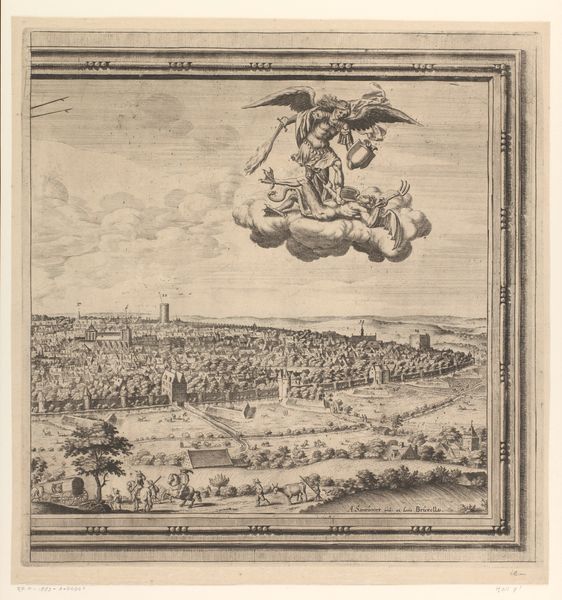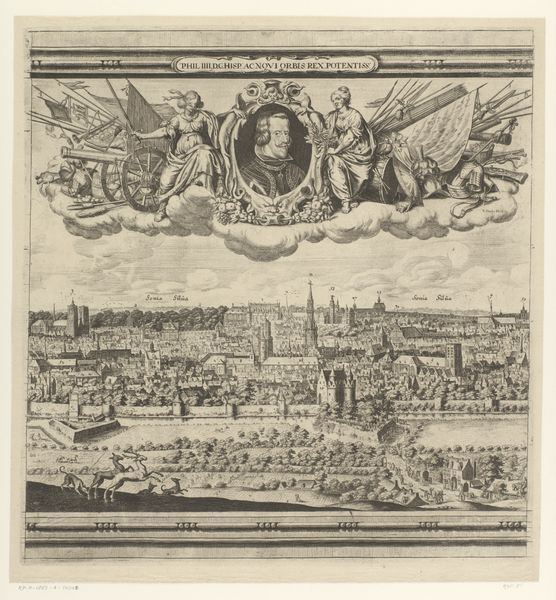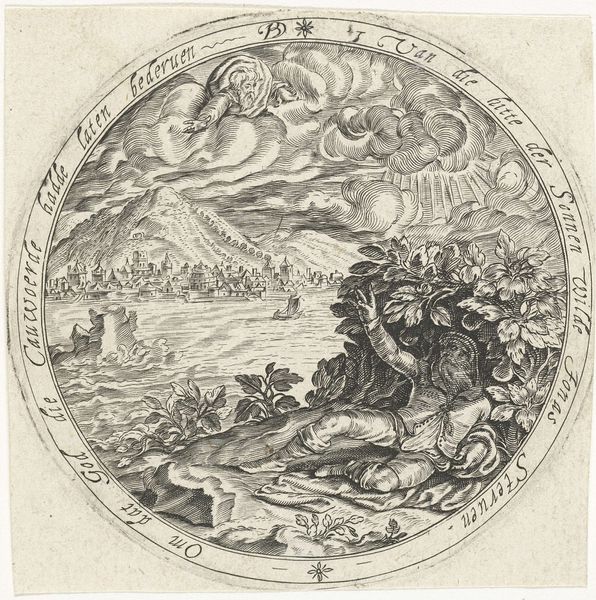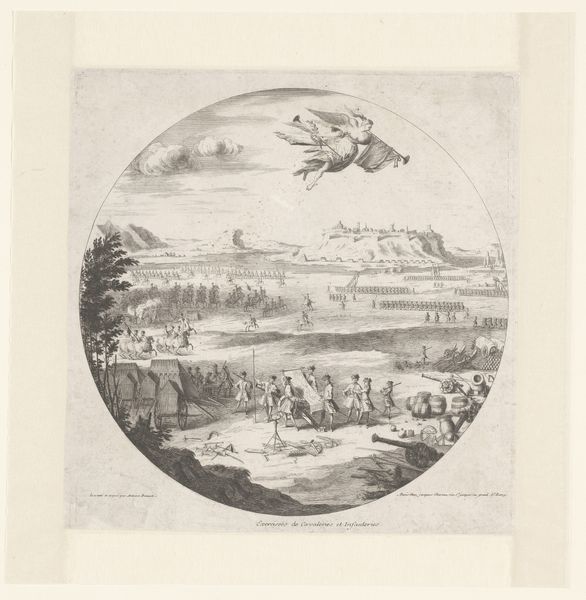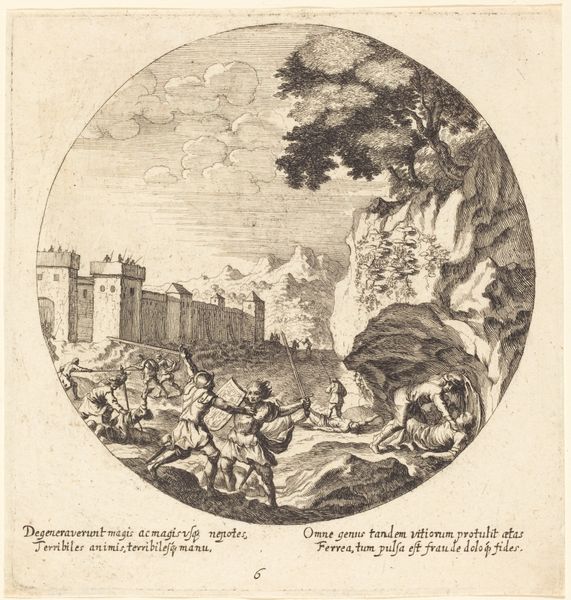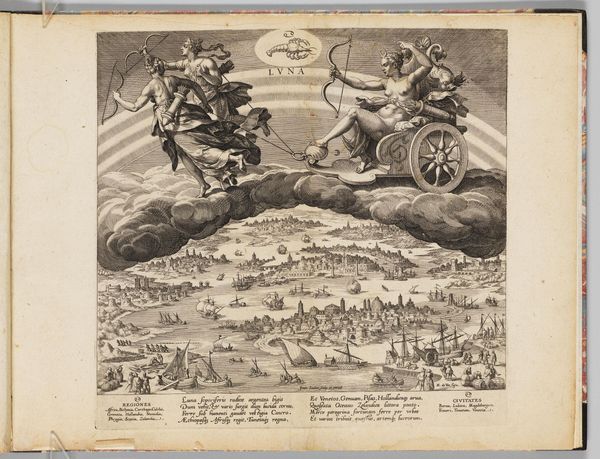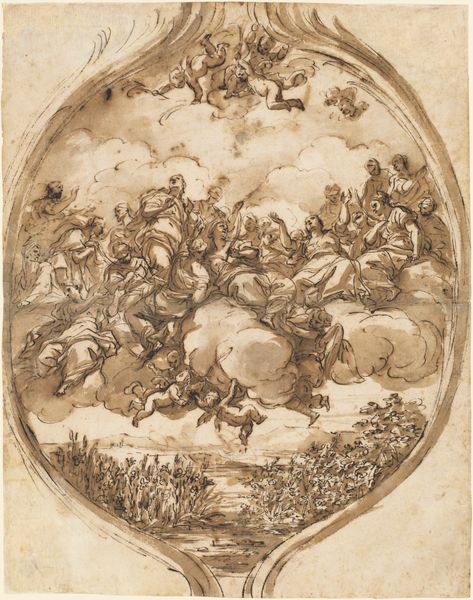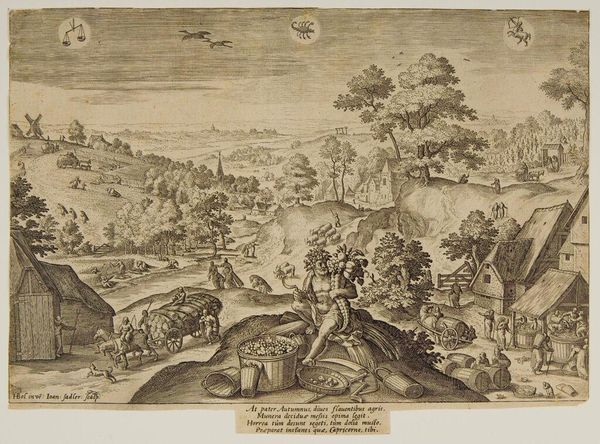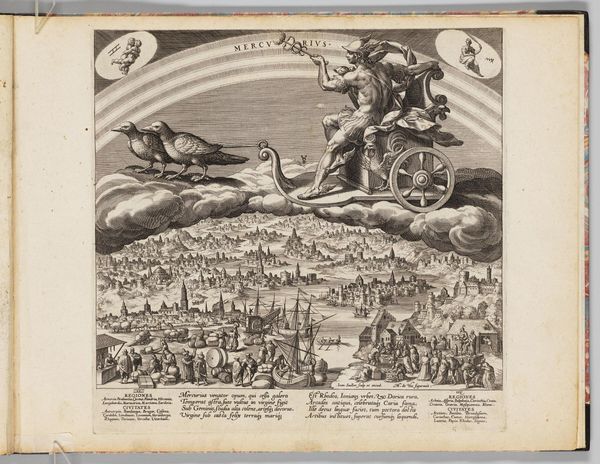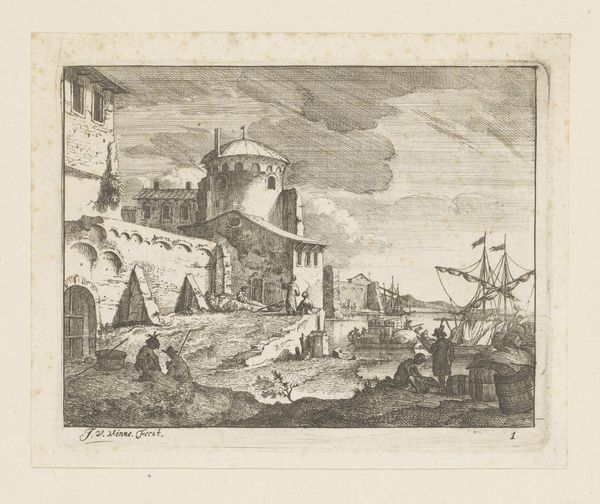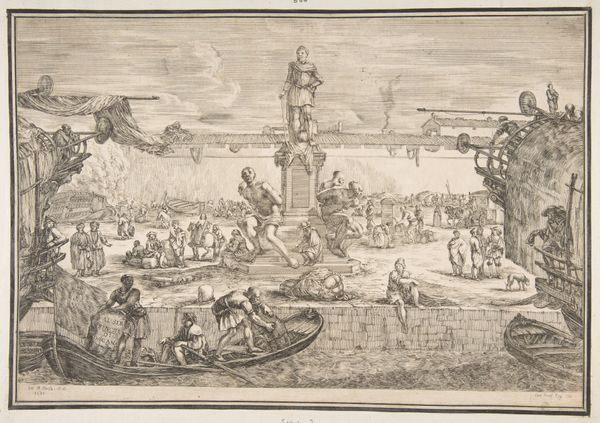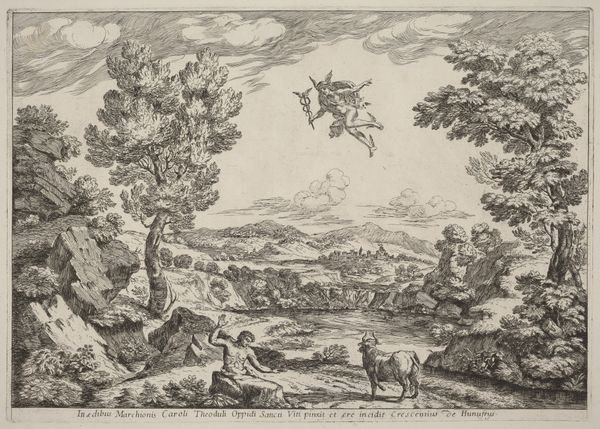
print, engraving
#
baroque
#
dutch-golden-age
# print
#
old engraving style
#
landscape
#
cityscape
#
history-painting
#
engraving
Dimensions: height 428 mm, width 418 mm
Copyright: Rijks Museum: Open Domain
Editor: This is Abraham Dircksz. Santvoort's "View of Brussels (left part)," an engraving from 1640. It strikes me as both a celebration of the city and a commentary on power, given the hunting scene in the foreground and the coat of arms above. How do you interpret the symbols in this work? Curator: It's a compelling question! The symbols weave a fascinating narrative. The coat of arms, prominently displayed, asserts authority, likely that of the Habsburgs then ruling Brussels. Consider, though, how it's presented, almost floating ethereally. What feelings does this provoke in you? Editor: It does feel a bit detached, maybe even aspirational, versus concretely powerful. And the birds flying away… are they fleeing something? Curator: Perhaps. Birds, traditionally symbols of freedom and the soul, might suggest the aspirations or anxieties of the citizenry under foreign rule. Think about the act of engraving itself - the painstaking detail to etch not just a city, but a feeling. How might this feeling be different from a painting? Editor: It's less immediate, more considered, somehow. It lends itself to intricate details that reinforce this complexity. Like the hunters versus the detailed rendering of buildings in Brussels… Curator: Exactly! Consider the hunters. The accoutrements of power: horses, dogs, and weapons all point toward control. Yet, observe that distant Brussels dominates the composition. It is a solid reminder of enduring civic identity despite any foreign governance, the buildings themselves holding layers of histories. Editor: So the symbolism is not straightforward. There's a tension between power and the city's own enduring spirit? Curator: Precisely. It shows that power exists within the context of the community. Santvoort seems to be hinting at something both stable and restless here. Editor: It's incredible how much meaning can be packed into a single print. I hadn't thought about the symbolic weight of something as seemingly simple as flying birds. Curator: Indeed, art offers us a unique form of cultural memory; an invitation to decode and reimagine how history is felt.
Comments
No comments
Be the first to comment and join the conversation on the ultimate creative platform.
